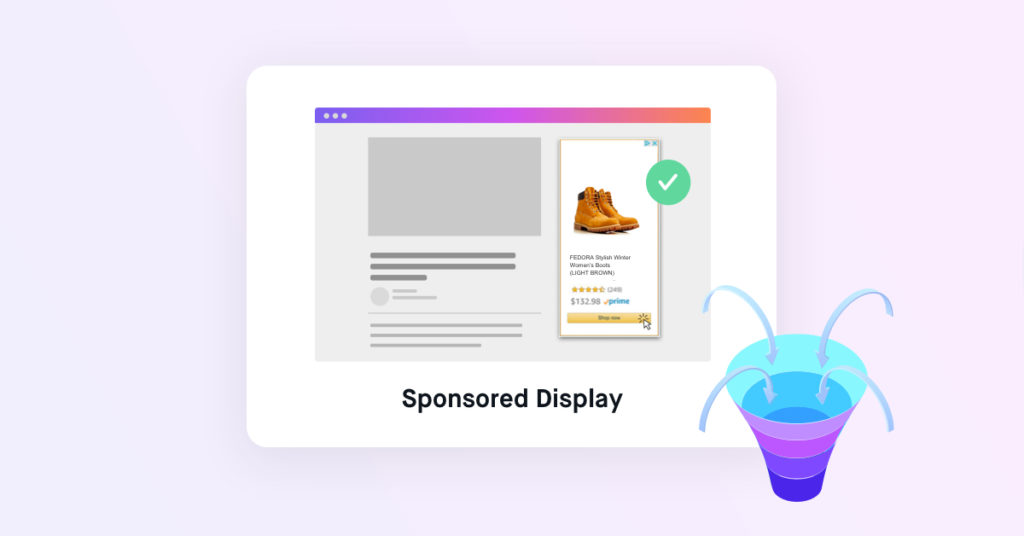A full-funnel of self-service ads for Amazon sellers and brands is made up of Sponsored Products, Sponsored Brands, and Sponsored Display.
To understand where Sponsored Display fits into this funnel, let’s start by looking at the importance of the top of search.
Why You May Need Amazon Sponsored Display Ads?
The graph below shows the average percentage of total organic conversions captured by just the top three organic results. The graph shows this by branded vs. unbranded terms in each Amazon category.
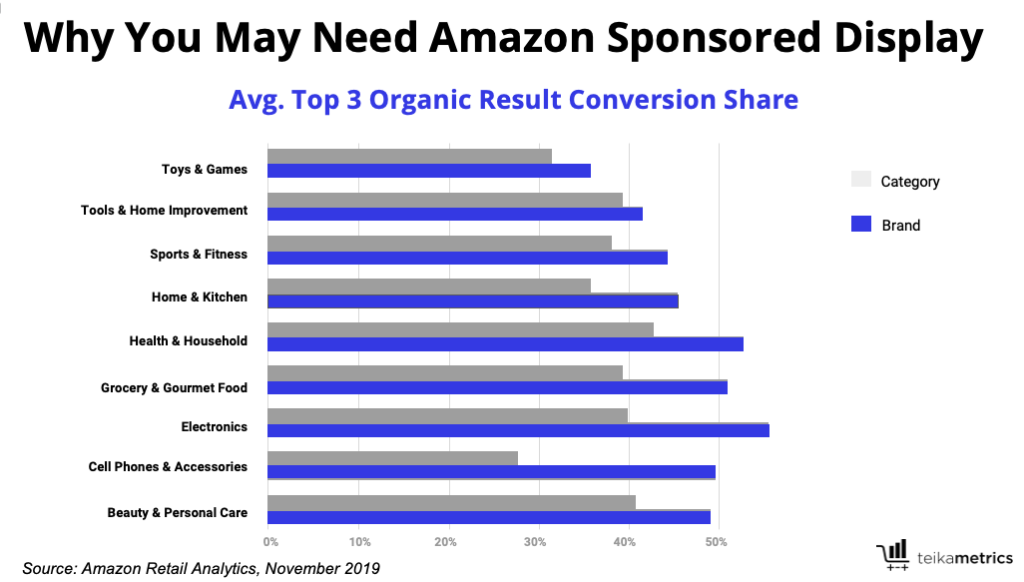
A large percentage of conversions is captured by just those top three results, highlighting the importance of showing your product at the top of a search results page. If you aren’t showing up organically in those top spots, or even on page one, you’re going to miss out on a large share of conversions.
If you don’t find yourself in those top spots organically, sponsored ads can help your business grow. In this article, I’ll be focusing on the opportunities available with an ad unit called Sponsored Display.
Like other advertising strategies on Amazon, Sponsored Display should not be looked at in a silo. Full funnel support over the long-term requires focusing on both search results pages and supplemental display advertising.
It’s important to understand what tactics and advertising types you need to deploy to reach different parts of the Amazon advertising funnel. In the chart below, you can see the search options indicated on the left, and then you can see display indicated on the right.
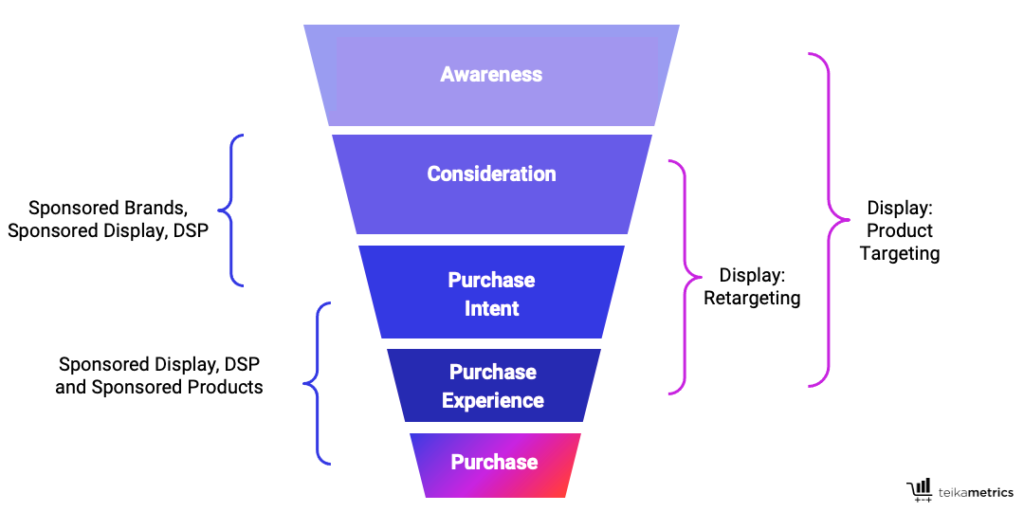
Amazon DSP vs. Sponsored Display
If you’ve heard about Amazon’s DSP, another display advertising option, it’s worth laying out the differences between that and Sponsored Display. At a high level, Amazon DSP gives advertisers more control over who sees their ads, and Sponsored Display gives advertisers more control over where their ads are seen.
Amazon display advertising gives advertisers enhanced control and flexibility to define target audiences using granular categories, access more supply sources, use completely flexible and customizable creatives, and utilize off-Amazon ad destinations.
Sponsored Display Ads allows advertisers to quickly set up campaigns that leverage refined, highly customizable contextual targeting options on specific product detail pages or on entire categories, and allow advertisers to bid separately for every targeting combination. Sponsored Display automatically generates ad creatives that drive customers to a different, relevant product detail page on Amazon.
Sponsored Display also optimizes for the likelihood of a click, based on shoppers viewing a placement at auction time, and will dynamically reduce bids when the likelihood of a click is lower. DSP, on the other hand, is more like traditional display ad options you find elsewhere, in that it’s designed to get your ad seen across as many places as possible based on your budget.
This is reflected in how each of the ad types is billed. DSP ads are charged on a CPM (cost per mille or cost per thousand impressions) basis, whereas Sponsored Display typically charges on a CPC (cost per click) basis, however certain SD Audience targeting is done CPM. Attribution models also differ, with DSP using an impression-based model and SD using a click-based model for ad-attributed sales.
Sponsored Display campaigns have no minimum spend or bid thresholds. DSP, when managed by Amazon has a minimum investment of $35,000 (US) bi-monthly, although partners like Teikametrics can help advertisers by offering a lower required minimum investment.
A Full-Funnel Approach To Amazon Display Ads
Sponsored Display is a good way to show Amazon that your product drives shoppers to convert, generating sales velocity and keeping the Flywheel running. It needs to be a part of your overall strategy but should be viewed differently than Sponsored Products or Sponsored Brands.
Teikametrics built its business around algorithmically optimizing Amazon ad spend for seller profitability. This is done by factoring in all your costs when it comes to display advertising on Amazon and making algorithmically adjusted bid changes to maximize the margin on every ad-derived sale, and scaling back advertising when your Maximum Ad Cost of Sale goes beyond the thresholds you set.
This approach works – it’s the reason why we have thousands of sellers using our software, and other software players in the Amazon space have taken this approach. In short, being a profitable advertiser on Sponsored Products units comes solely down to winning Sponsored Products placements ONLY when it is likely to drive a profitable sale.
For Sponsored Brands, however, the calculus changes slightly. You may want to show up at the top of a search, even if that doesn’t result in a sale immediately. You’re betting that after a user clicks on another product and does some research, maybe your Sponsored Products ad shows up, or your product ranks organically, and that interaction may drive the ultimate sale. There is value in driving brand awareness, and Amazon makes ‘new-to-brand’ metrics available to Sponsored Brands advertisers.
This eye towards driving brand awareness with the goal of future sales, on top of any immediate returns, is similar to what you should be looking for out of Sponsored Display.
The graphic below shows a funnel organized around what your goals might be, and how Sponsored Display fits in at each stage.
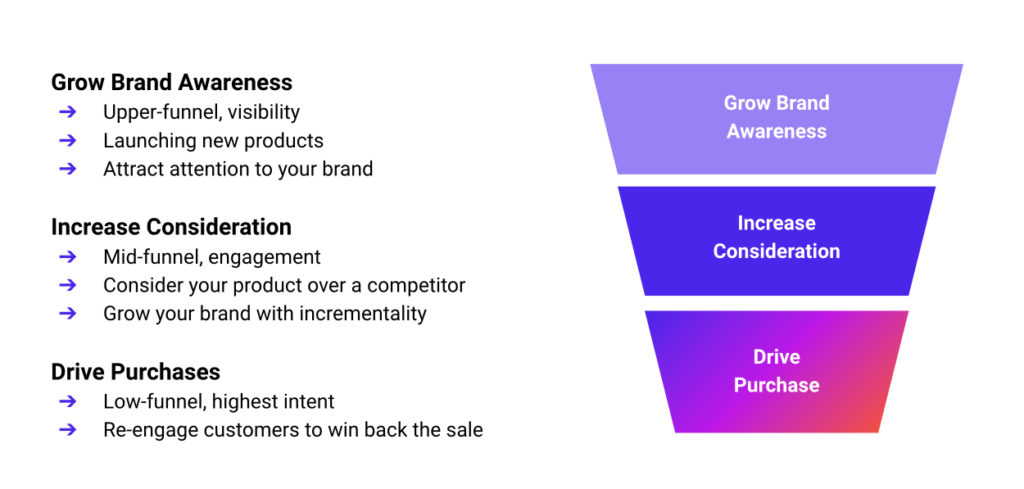
In addition to product targeting, which is great for consideration and driving conversions, you may want to consider ‘Views Remarketing’ as well. This targeting allows you to reengage audiences who have viewed specific product detail pages but haven’t purchased your advertised product(s) in the past 30 days. It’s a useful option for converting high intent shoppers.
Before Starting, Ask Yourself These Questions
When you’re setting your strategy around Sponsored Display, it’s worth answering these key questions. They all should play into how you plan to execute, your initial scope, and goal-setting.
Remember, this doesn’t stop once campaigns are live. As new competitors enter the space, or your business grows, you should continue to ask yourself these questions to modify your strategy based on performance and developing ‘on the ground’ realities.
- Who are the competitors you need to beat?
- Can you beat them on price?
- What’s your advantage? (reviews, features, etc.)
- Are your products being targeted?
- Ads showing up on your product detail pages?
- How do you plan to supplement Sponsored Display campaigns?
- Using Sponsored Products/Brands on key, high-volume generic terms?
- Testing with Amazon DSP?
Product Targeting Through Sponsored Display
So what exactly is product targeting through Sponsored Display? It’s geared toward building awareness among shoppers considering similar or complementary products and categories. Placements can appear at the top of the product detail page (a new placement!), next to the Buy Box, or alongside customer reviews.
Some benefits of Amazon Sponsored Display Ads include custom creative that can highlight product-specific elements or branding, as well as diverse placements.
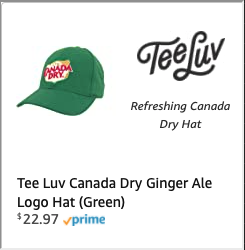
Best Practices For Picking Target ASINs
You can use the Search Term report from the Ad Console to compile ASINs to include in Sponsored Display campaigns. If you see an ASIN in that report, it means that your ad was shown on that PDP and the shopper clicked through to your product. Note that this report can include both your ASINs and your competitor’s ASINs if you have not properly negated your ASINs from your campaigns (which is a relatively new feature).
Amazon Sponsored Display Ads also allows for multiple ad groups to support optimization. With this newer feature, it’s also possible to set individual bids on specific categories and targets. We recommend mirroring our strategy for other sponsored ad placements – separate out top-performing products by campaign or ad group to allow for more control over settings. In tandem, keeping underperforming or newer products in their own campaigns or ad groups allows you to track performance separately and achieve against the different goals for each type of product.
With category targeting, consider starting broadly before moving into deeper sub-categories. This will allow you to more easily refine and optimize. An advertised product will only show up once on a product detail page, so having more than one product in an ad group (as long as they make sense to be grouped together) will give you the opportunity to show up multiple times within one PDP.
Finally, monitor the performance of your campaigns so you always know what ASINs are performing best with Sponsored Display – and which ones may not be as good a fit.
A Sponsored Display Success Story
Let’s look at a success story from one of our long-term clients who has been working with Teikametrics through many new advertising placement releases.
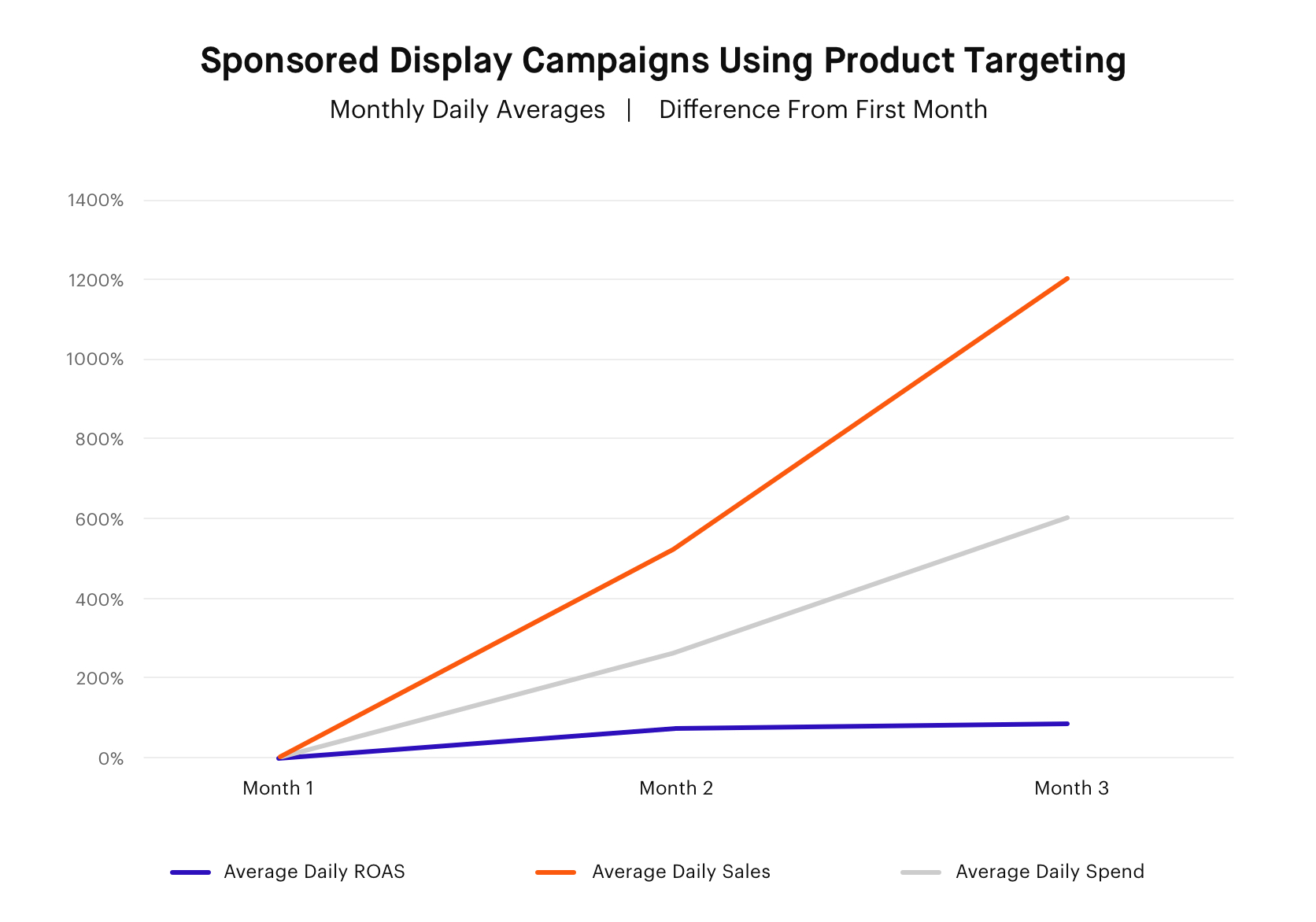
We’ve seen tremendous success profitably scaling their business on Amazon using Sponsored Display with an approach that you can replicate with slight adjustments to best fit your business.
We reviewed the Sponsored Products campaigns to determine products that would be most likely to drive sales, as well as play into any existing seasonality, which was the initial focus for moving those ASINs into a Sponsored Display campaign. This helped us increase the client’s overall market penetration for top-selling and seasonally relevant products.
Within each campaign, we had specific goals that we made bid adjustments against, whether it was category or product-based, based on sales volume, ROAS, or placements on top competitor pages. We reviewed spend, clicks, and ROAS when making bid adjustments regularly. Our focus was to increase bids until we hit a statistically significant amount of spend or clicks (whichever came first), and then we worked to optimize against goals from there.
Finally, it’s worth noting that making Sponsored Display a meaningful, optimized driver of sales is a longer-term, learning process. It takes time to understand which products work best for Sponsored Display as well as what targeting options work best for those products. It’s a process of consistently refreshing targeting based on live trends.
Takeaways
➔Your Sponsored Products and Sponsored Brands ads serve unique purposes – consider where Sponsored Display should act as support (e.g. new product launch)
➔Before investing in Sponsored Display and Product Targeting, use other advertising reporting on Amazon to help inform your campaigns initially
➔Organize your campaigns with clear delineations by product types, etc. so it’s easier to confidently measure performance
➔Don’t set it and forget it – like any other campaign on Amazon, adjustments need to be made regularly to account for performance trends


